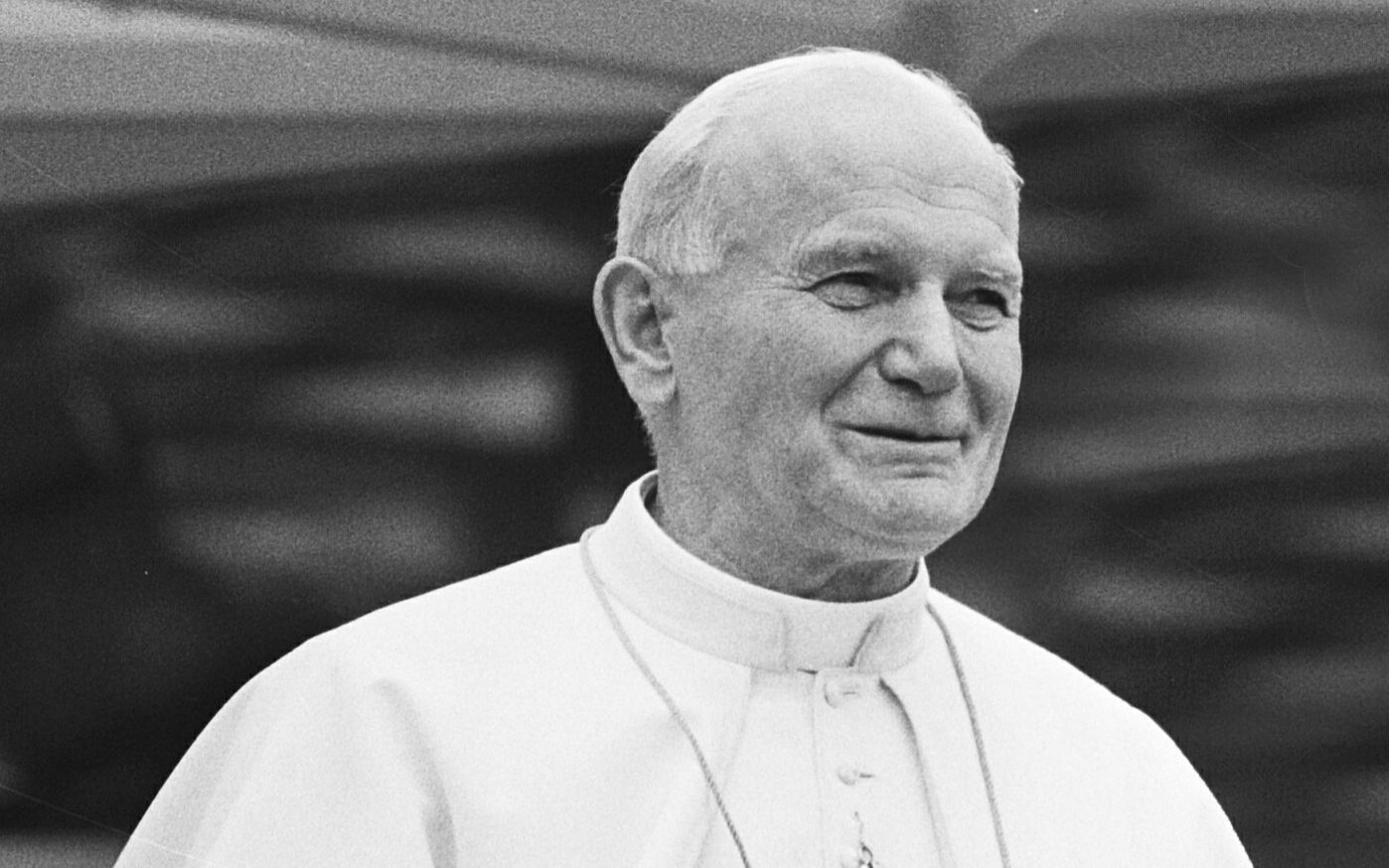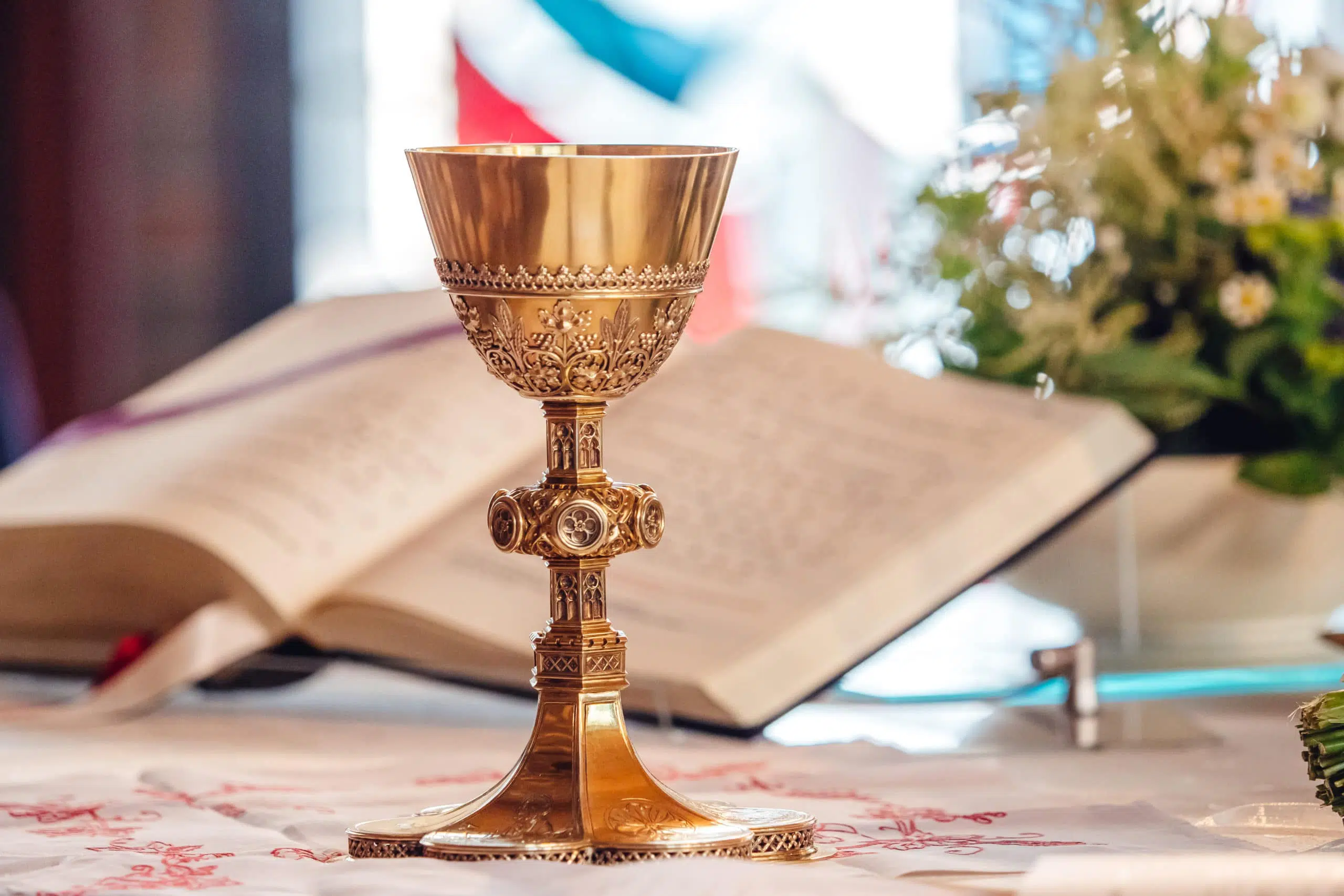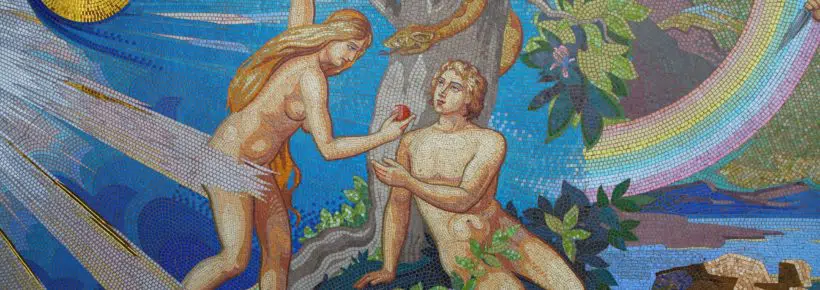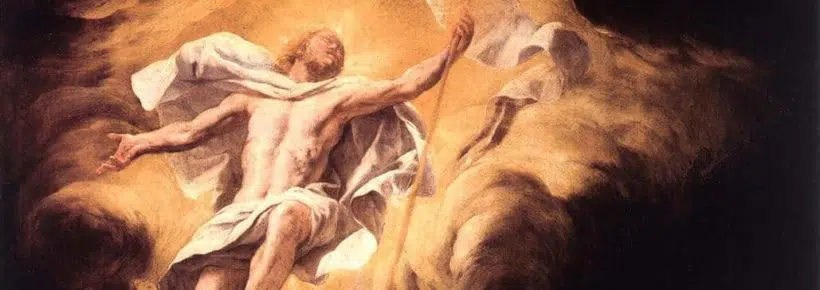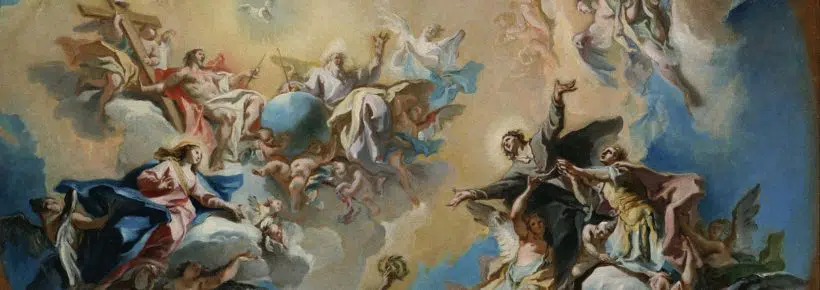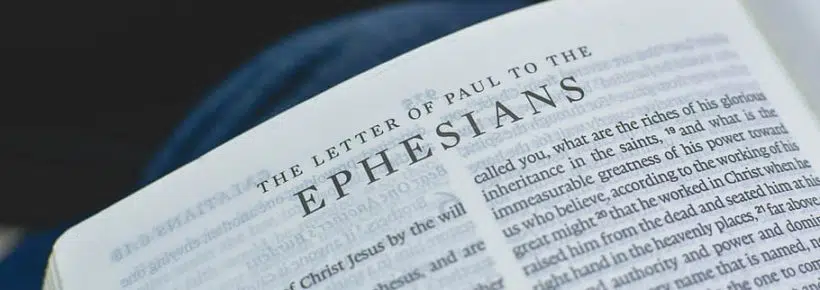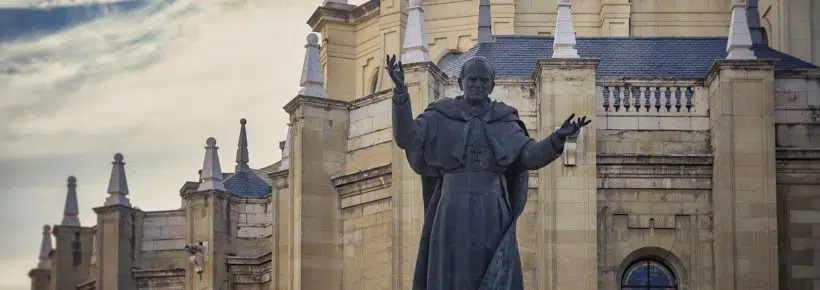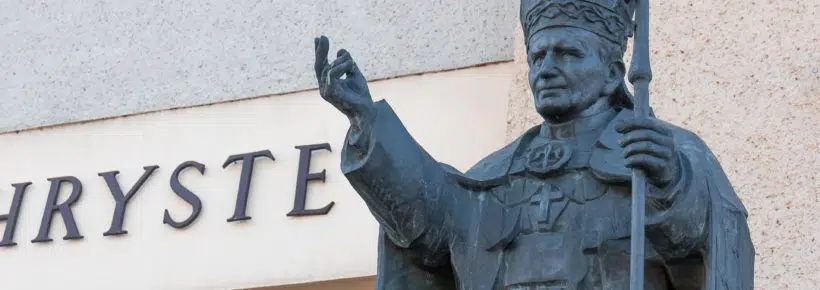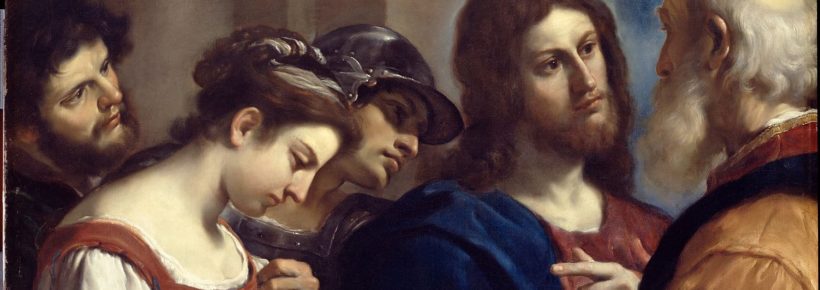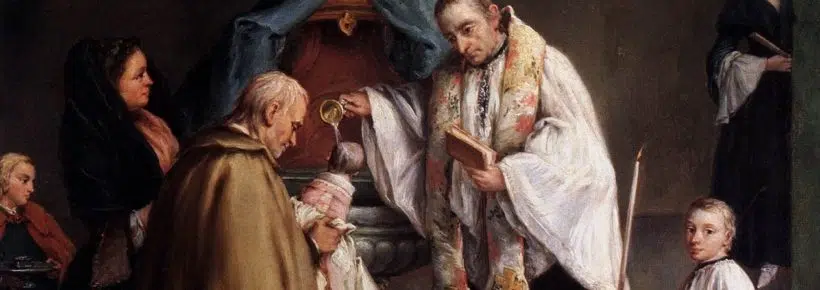From 1979 to 1984, Saint John Paul II gave 129 weekly talks on human sexuality and marriage. He delivered these addresses during his Wednesday public audiences in St. Peter’s Square. The title he most often used was Theology of the Body (TOB).
The word “theology” means the study of God. More precisely, it means the study of what God has revealed about Himself and about us (Catechism of the Catholic Church no. 68). The “theology of the body” refers to the study of who God is and who we are by reflecting on what God has revealed about the human body, especially in the context of Christian marriage.
This may sound surprising since the study of God is supposed to be something spiritual, not material like a body. But let us remember that God has revealed Himself fully in Jesus Christ who is the Word of God. Now the Bible says that “the Word became flesh and dwelt among us” (John 1:14, see also TOB 23). In other words, the Eternal Son of God, the Second Person of the Holy Trinity, assumed a human body and a human soul to reveal God’s love to us (CCC 458).
Moreover, Jesus gave up His body on the cross to save us from sin and to reconcile us with God (Luke 22:19 and CCC 457). Finally, He rose from the dead to conquer death and to give us eternal life. The body of the risen Lord is a glorious body. His resurrection did not consist in simply coming back to life, but in entering into an eternal and glorious life. Jesus promised His faithful followers that they would also be resurrected with a glorious body (Philippians 3:21). The body of Christ is the most palpable way in which God has revealed Himself to us and His plan for our salvation (TOB 23).
But what about the soul? Didn’t Jesus come to save our souls?
He actually came to save the whole human person, body and soul. If you think about it, our salvation couldn’t be any other way. We are beings composed of body and soul (CCC 364). Therefore, it was fitting that Jesus Christ came in the flesh to save both our bodies and our souls.
It is true that at the moment of death, the soul departs from its body to be in the presence of God to receive His judgement. But on the last day there will be a reunification of the body with its soul. If the person has been faithful to God, that person will be in His presence forever in body and soul, just like Christ and His mother Mary are at this very moment in both body and soul in Heaven (CCC 1023-1024).
Notice that in the Creed we recite at Sunday Mass we profess our belief in the resurrection of the body. The soul is not mentioned. The reason for this is that the existence of the soul can be proven by means of reason alone. However, the resurrection of our bodies, and most especially the resurrection of the Body of Christ, are realities that surpass the power to know of human reason. That is why God revealed them to us (CCC 50).
And what does marriage have to do with the Theology of the Body?
Actually, it has a lot to do with it. In Ephesians 5:21-33 St. Paul says that Christian marriage is a reflection of Christ’s love for the Church, which is his body. The real marriage is that of Jesus and His Bride the Church, ours is a visible sign of that marriage. This does not mean that our marriages are not real. On the contrary, it shows the awesome dignity of Christian marriage by emphasizing its divine origin in the union of Christ and his Church (TOB 87-93).
Moreover, we are the Church. We are the body of Christ and Christ is our head (Eph. 5:23). St. Paul uses the image of the human body to illustrate what he means by the Church as the body of Christ and the union of the Church with Jesus. It is true that our union with Christ is spiritual. However, let us not forget that in the Eucharist we enter into communion with the body, blood, soul and divinity of Jesus (CCC 1413). But this is not all. In Holy Communion we also unite ourselves spiritually (mystically) to our brothers and sisters in Christ. In this way we build up the Mystical Body of Christ in a very real way (CCC 1416).
How is it that the human body can be a sign of the presence of God, Who is pure Spirit (see John 4:24)?
That is precisely the point St. John Paul II makes in the Theology of the Body. As he himself said: “The body, in fact, and only the body, is capable of making visible what is invisible: the spiritual and the divine” (TOB 19). The Holy Father taught that God has built into the human body this capacity of being a sign of His invisible mystery of love and life since the beginning.
He also taught what is called the conjugal meaning of the body. This refers to the fact that God also inscribed in the bodies of man and woman the capacity to express love as the gift of self that is, at the same time, life-giving (TOB 15). He created man and woman for each other so that they would express to each other this authentic love always open to life. This is why God created marriage since the beginning of creation. “Therefore a man leaves his father and his mother and clings to his wife, and they become one flesh” (Genesis 2:24).
St. John Paul II also taught in the Theology of the Body that this original unity in marriage between man and woman was the original or primordial sacrament. By this he meant that through their original bodily unity, man and woman expressed God’s invisible love and grace to each other and to the rest of creation (TOB 97-98).
Didn’t Christ institute the seven sacraments, including marriage?
That is absolutely right. But let us look at what sacraments are in general. The Church teaches us, “The sacraments are efficacious signs of grace [the life of God], instituted by Christ and entrusted to the Church, by which divine life is dispensed to us.” (CCC 1131).
Every word in this definition has a very important meaning. Let us take a look at the term “sign.” We all know that a sign is a physical thing that stands for something else. For example, the American flag stands for our nation and the honor we owe to her. Likewise, in each of the sacraments there are signs that stand for an invisible reality which is the grace of God. Examples of these signs are water, oil, words, and gestures.
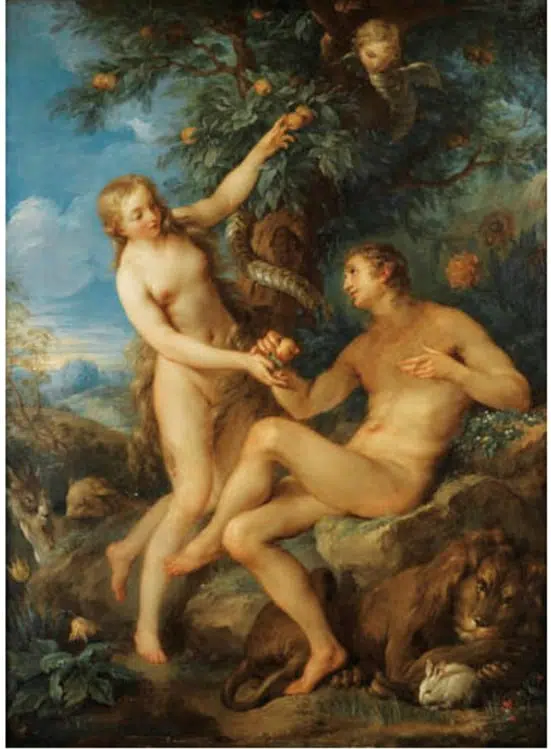
Francois Lemoyne – “Adam and Eve”
However, there is something in these sacramental signs that other signs do not have. And that something is expressed by the key word “efficacious.” Here, “efficacious” means that the sacramental sign brings about what it signifies. A flag does not make present the reality of the nation. It merely points to that reality. But in the case of the sacraments, the signs do make present the reality of grace. For example, in the Sacrament of Baptism, the water and the words “I baptize you in the Name of the Father, and of the Son, and of the Holy Spirit” not only point to the reality of God’s sanctifying grace, but through them that reality is made present.
Now in the case of Christian marriage, the vows that the groom and the bride exchange during their wedding ceremony and their conjugal union afterwards constitute the sign of this sacrament. When St. John Paul II said that the original unity of man and woman was the original sacrament he meant something very special. He meant that through this original unity God poured His grace to man and woman and to the rest of creation. Let us remember that at that time man and woman were in the state of innocence. They had not fallen into original sin yet (Gn 3). Therefore, their bodies were efficacious signs of the invisible grace and love of God for man and woman and for the rest of creation (TOB 97-98).
But didn’t Christ institute the Sacrament of Marriage?
Absolutely. What happened was that unfortunately the original man and the original woman fell into sin (Gn 3). They lost the grace with which God had created them. This loss took away the efficaciousness of their original unity. It no longer transmitted the grace of God (CCC 416).
But God did not give up on humanity. He devised a plan of salvation. He chose a people, Israel, to gradually reveal Himself through history to Israel and the rest of humanity. He chose Israel to bring forth a promised Savior (Gn 3:15): Jesus Christ.
Now, through the Prophets, God revealed to His People that He detested idolatry and desired absolute commitment to Himself and His commandments of love. Idolatry is, of course, a sin against the very first commandment, which is to love God above everything else (Deuteronomy 5:7-10 and 6:5).
But the interesting thing was that, under God’s inspiration, the Prophets used the image of adultery to tell the people how horrible idolatry was. In fact, the Prophets (especially Isaiah 54 and 62, Jeremiah 2-3, Ezekiel 16 and 23, and Hosea 1-3) compared the relationship between God and Israel to a marriage between a man and a woman. So the image of the sin of adultery to express the sin of idolatry made perfect sense to the people of Israel. Moreover, it prepared the way for Jesus to reveal his love for the Church (and humanity) as his bride (TOB 95).
So when Jesus came to earth and instituted the sacraments He restored the original sacrament by raising Christian marriage to the dignity of a sacrament. In this way, Christian marriage would once again transmit the grace of God (CCC 1601).
What does it mean that marriage is the original sacrament?
The Theology of the Body teaches us that the Sacrament of Marriage is the original model for all sacraments and also reveals the way God saves us in Jesus Christ (TOB 99). The special grace of Christian marriage is to make present the love between Christ and His bride the Church. All the other sacraments also bring about this unity between Christ and His Church. But in the Sacrament of Marriage this unity is the most visible. Moreover, just as a man gives his whole being (including his body) to his wife, Christ gave His whole being (including His body) to save and unite himself spiritually to His bride the Church, and eventually to all humanity (CCC 1616-167).
However, it is only in the Sacrament of the Eucharist where this unity between Christ and His Church is actually achieved in a substantial way. This is so because only in this Sacrament the signs (bread and wine), through the priest’s words of consecration, cease to be signs and actually become the reality that they signify: the Body and Blood of Our Lord Jesus Christ. Only in this Sacrament is Christ substantially present. Body, Blood, Soul and Divinity, Christ is present in the fullest sense (see CCC 1374). Therefore, it is now truly possible for our individual union with Christ through Holy Communion to also unite us spiritually with our brothers and sisters in Christ, thus building up the Mystical Body of Christ, which is His Church (CCC 1396). This is why we also pointed out that the marriage between Christ and His Church is the real marriage, whose efficacious sign is the Sacrament of Christian Matrimony.
The Eucharist is also “a sacrifice because it re-presents (makes present) the sacrifice of the cross” (CCC 1366). Therefore, the Eucharist truly makes present Christ’s sacrificial offering of His body to His Spouse the Church (His body made up by us the faithful). Again, this is why the Sacrament of Marriage is also a sign of the truly present sacrificial love of Christ for His Church (CCC 1368).
For all the above reasons, the Sacrament of Marriage, as all of the other sacraments, has as its source, heart, and summit the Sacrament of the Eucharist (CCC 1407). Finally, the banquet of the Eucharist on earth anticipates the Eternal Banquet of the eternal wedding of Christ and His Church in Heaven (Revelation 19:7-9, CCC 1402 and 1602).
How are the 129 sections organized?
This is a very good question because it brings about the individual subtopics into which the 129 sections are divided. And once we look at the arrangement of these subtopics, we realize how all of them make sense and constitute a coherent whole.
The Theology of the Body has been arranged into the 6 cycles shown below. The corresponding catechesis are indicated by means of brackets:
- The Beginning: The Original Unity of Man and Woman [1-23].
- Purity of the Heart [24-63].
- The Resurrection of the Body [64-72].
- Christian Virginity and Celibacy for the Kingdom of God [73-86].
- The Sacrament of Marriage [87-107].
- Love and Fertility [114-129]
What cultural changes inspired the Theology of the Body?
To understand the essential meaning of the 6 cycles as a coherent whole, we must realize first what ultimately motivated St. John Paul II to write the Theology of the Body. The Holy Father was very concerned about the dissent, even within the Church herself, against the Encyclical Humanae vitae (HV). This encyclical was written by Pope St. Paul VI and published in 1968, right in the middle of the “sexual revolution.” The sexual revolution was sparked by the appearance of the contraceptive pill in the U.S. market in the 1960’s, and then in those of the rest of the world.
The use of the Pill, and eventually of other contraceptives, changed the collective mentality regarding sex and marriage. People began to believe that it was OK to have sexual relations without procreation. Given this separation between sex and procreation, they eventually began to believe that it was also OK to have sexual relations without marriage. The results of this mentality, predicted by Paul VI in HV 17, were disastrous for marriage and the family: divorce increased, sexual immorality increased, abortion became legal and also increased, governments, like China, began to impose abortion, contraception and sterilization on their own people. The UN, IPPF and other international organizations began to exercise population control by the same means on developing countries.
In HV, Paul VI repeated in simple language the 2,000 year old teaching of the Church against contraception, sterilization and abortion. He also explained the teaching of the Church about the beauty of marriage and of conjugal love, as well as the awesome dignity and duty of spouses to transmit human life and educate their children in God’s love.
St. John Paul II realized that he needed to defend HV from attacks coming from within and without the Church. Since HV was a short Encyclical, St. John Paul II used the Theology of the Body to show how the teachings contained in HV had a profound basis in the Bible, the past teachings of the Church throughout history, and a correct view of the human person – in particular, of man and woman united in marriage.
St. John Paul II reveals the Catholic vision for love, sexuality, and vocation
In the light of this perspective, the Holy Father developed at length the topics shown above in the outline of the cycles. In the first cycle, he reflected on what Genesis says about the beginnings of the original unity of man and woman in marriage. He showed how Jesus wanted to restore that original unity of marriage that no man may dissolve (Matthew 19:3-9). In the second and third cycles, he explained the correct understanding of the human person (anthropology) as revealed by God. He reflected on both the spiritual dimension of the human person (cycle 2), and his material dimension (cycle 3). In both cases, he laid out the kind of human person that Jesus wanted us to be. In cycles 4 and 5, the Pope presented the two vocations to which God calls Christians to live out authentic love, which is a free gift of self to others that always gives life, physical or spiritual: celibacy and marriage.
These five cycles set the biblical, theological and anthropological foundations of cycle 6. In this last cycle, St. John Paul II dealt directly with the essential teaching of HV, namely, that love and openness to life may not be separated willfully in any conjugal act. He went on to develop a very positive and beautiful view of human sexuality, conjugal love and procreation.
Moreover, as we have hinted above, he inserted his teaching on marriage and the family within the context of Christ’s love and the salvation of his Church and humanity. This is why we can say that the Theology of the Body is not only a teaching on marital morality and spirituality, but also a whole new way of looking at the entire body of Catholic teaching. Topics such as God, the Holy Trinity, Jesus Christ, the Blessed Mother, the Church, the Sacraments, and yes, sexual morality are contemplated anew through the prism of the theology of the body. The theology of the body is, therefore, not only a set of teachings, but also a new way of thinking through those teachings and of doing our best, with God’s grace, to put them into practice.
Where can I find the catechesis of the Theology of the Body?
You can find all of the Theology of the Body catechesis from 1979 to 1984 in print in Michael Waldstein’s Man and Woman He Created Them – A Theology of the Body (Pauline Books & Media: 2006). An online text is available here.
Next articles in this series:
Related Content
Adolfo is the Director of Education for Hispanic Outreach for Human Life International and of HLI's Hispanic outreach arm Vida Humana Internacional. He has a Masters in Theology from St. Vincent de Paul Regional (Major) Seminary and a License in Moral Theology from the Alphonsian Academy in Rome.
Adolfo has traveled frequently to VHI’s affiliates in Latin America to give talks, training sessions, and media interviews. He has authored and co-authored books, articles, reports, and a pro-life training course for Hispanics in the U.S. Adolfo has also participated in the production of two TV pro-life series in Spanish, which have been aired through EWTN en Español.


